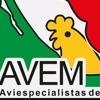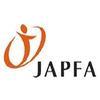Dietary soy oligosaccharides affect the gastrointestinal health and feed efficiency of growing chicks
The objective of this experiment was to investigate the effects of the soy galactooligosaccharides (GOS) raffinose and stachyose on performance and gastrointestinal health in young broilers. Birds were fed a GOS-devoid diet based on soy protein isolate (SPI) or the SPI diet with 0.9, 1.8, 2.7, or 3.6% GOS. Stachyose and raffinose were maintained at a ratio of 4:1, similar to what is found in soybean meal, and were added at the expense of corn starch. These 5 treatments were administered to 10 replicate battery cages of 8 birds (0.04 m2/bird). Birds had ad libitum access to feed and water and BW and feed consumption were recorded on 0, 7, 14, and 21 d post-hatch for calculation of feed intake (FI), body weight gain (BWG), and feed conversion ratio (FCR). On 14 and 21 d, whole blood was collected for complete blood counts. Before blood collection on 21 d, birds were orally gavaged with fluorescein isothiocyanate-dextran (FITC-d), and serum samples were analyzed for FITC-d as a marker of gut leakage. Excreta were collected on d 14 for moisture analysis. Crop presumptive lactic acid bacteria (LAB) counts and crop and ceca pH were recorded at d 21. From 0 to 21 d, FI increased linearly (P < 0.01) as dietary GOS increased, whereas BWG increased (P < 0.05) quadratically. Feed conversion ratio increased (P < 0.01) linearly, with a 3-point increase from birds fed SPI to 3.6% GOS. On d 14, there was a linear increase (P < 0.01) in excreta moisture as dietary GOS increased. There was a quadratic increase (P < 0.05) in crop LAB recovery and a tendency for lower (P = 0.08) crop pH as GOS increased, whereas ceca pH decreased (P < 0.01) linearly. At both d 14 and 21, linear increases (P < 0.05) in whole blood heterophil to lymphocyte ratios were observed as dietary GOS increased. Serum concentrations of FITC-d increased quadratically (P < 0.01) as dietary GOS increased, with the greatest numerical FITC-d observed at 1.8%. No histopathological lesions were observed in duodenum or ileum of all groups. Results from this trial indicate that soy GOS have dose-dependent effects on broiler health and feed efficiency from 0 to 21 d.
Key Words: soybean meal, oligosaccharide, raffinose, stachyose.
Presented at the 9th Symposium on Gut Health in Production of Food Animals, St. Louis, USA, 2021. For information on the next edition, click here.




















